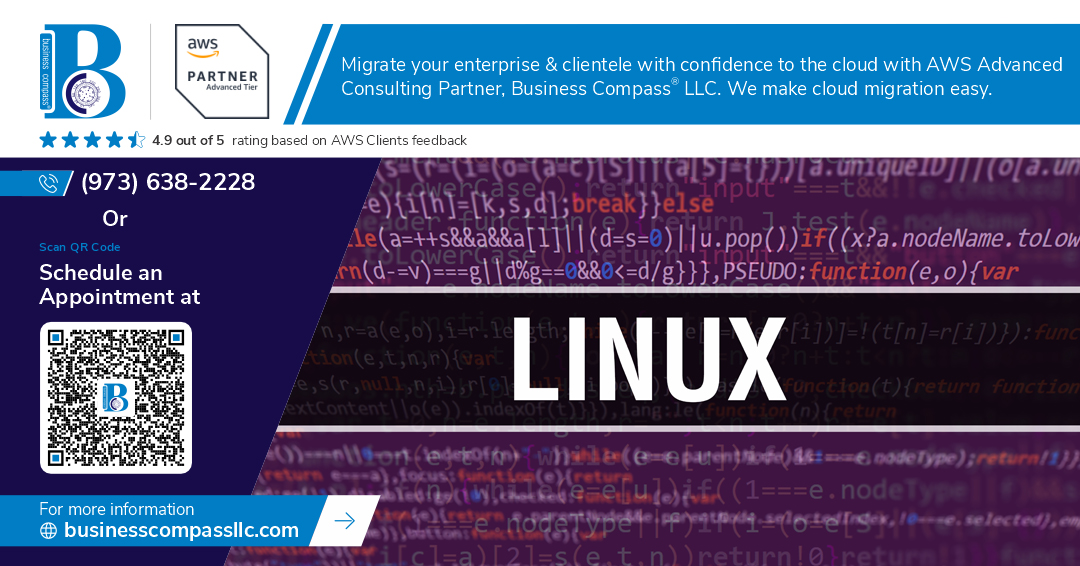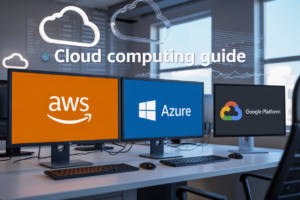Have you ever wondered why there are so many flavors of Unix? 🤔 From the familiar macOS to the robust Linux distributions, Unix-like operating systems power everything from your smartphone to supercomputers. But with such diversity, how do you choose the right one for your needs?
Navigating the world of Unix can be overwhelming. Each flavor comes with its own set of features, strengths, and quirks. Whether you’re a seasoned developer, a system administrator, or just a curious tech enthusiast, understanding these differences is crucial. After all, the right choice can significantly impact your system’s performance, security, and overall user experience.
In this comprehensive guide, we’ll dive deep into the Unix universe, comparing and contrasting the major players. We’ll explore everything from core differences and performance metrics to security features and desktop environments. By the end, you’ll have a clear picture of what sets each Unix flavor apart, helping you make an informed decision for your next project or system upgrade. Let’s embark on this Unix-flavored journey together! 🚀
Major Unix Flavors Overview
BSD: The Berkeley Software Distribution
BSD, or Berkeley Software Distribution, is one of the earliest and most influential Unix variants. Developed at the University of California, Berkeley, BSD introduced several key features that are now standard in many Unix-like systems.
Key Features of BSD:
- Open-source licensing
- Advanced networking capabilities
- Improved file system
- Enhanced security features
| BSD Variant | Description | Notable Use Cases |
|---|---|---|
| FreeBSD | General-purpose OS | Web servers, embedded systems |
| OpenBSD | Security-focused | Firewalls, secure servers |
| NetBSD | Highly portable | Research, older hardware |
System V: AT&T’s Commercial Unix
System V, developed by AT&T, became the standard for commercial Unix implementations. It introduced several features that are now considered essential in modern Unix systems.
System V Innovations:
- SVID (System V Interface Definition)
- Init system for boot process management
- Improved inter-process communication
Linux: The Open-Source Unix-like OS
Linux, while not technically Unix, is a Unix-like operating system that has gained widespread adoption. Its open-source nature and flexibility have made it a popular choice for various applications.
Linux Distributions:
- Ubuntu: User-friendly, popular for desktops
- Red Hat Enterprise Linux: Commercial, enterprise-focused
- Debian: Community-driven, highly stable
- Arch Linux: Minimalist, customizable
macOS: Apple’s Unix-based System
macOS, Apple’s operating system for Macintosh computers, is built on a Unix foundation. It combines Unix stability and power with a user-friendly interface, making it popular among developers and creative professionals.
macOS Unix Features:
- Darwin kernel (based on BSD)
- POSIX compliance
- Terminal for command-line access
- Native support for Unix tools and utilities
Now that we’ve covered the major Unix flavors, let’s explore the core differences between these variants in more detail.
Core Differences in Unix Flavors
Kernel Architecture
Unix flavors differ significantly in their kernel architectures, which impacts system performance and functionality. Here’s a comparison of kernel architectures across major Unix variants:
| Unix Flavor | Kernel Type | Key Features |
|---|---|---|
| Linux | Monolithic | Modular, highly customizable |
| FreeBSD | Monolithic | Efficient memory management |
| Solaris | Microkernel | Fault isolation, easier debugging |
| macOS | Hybrid | Combines Mach microkernel with BSD elements |
File System Hierarchy
While Unix systems generally follow the Filesystem Hierarchy Standard (FHS), there are notable differences:
- Linux: Strictly adheres to FHS
- FreeBSD: Uses a simplified structure with /usr/local for third-party software
- macOS: Unique structure with /Applications and /Users directories
Package Management
Package management systems vary across Unix flavors:
- Linux:
- Debian-based: APT (dpkg)
- Red Hat-based: YUM/DNF (RPM)
- FreeBSD: Ports and pkg
- macOS: Homebrew (third-party)
- Solaris: IPS (Image Packaging System)
Init Systems
Init systems, responsible for system startup and service management, differ among Unix variants:
- Linux: Systemd (most distributions), SysV init (older systems)
- FreeBSD: RC system
- macOS: launchd
- Solaris: SMF (Service Management Facility)
Command Line Utilities
While many core utilities are common across Unix systems, there are differences in availability and implementation:
- GNU utilities (Linux) vs. BSD utilities (FreeBSD, macOS)
- Solaris-specific commands like dtrace for system analysis
Now that we’ve explored the core differences in Unix flavors, let’s examine how these variations impact performance and scalability across different Unix systems.
Performance and Scalability
System Resource Management
Unix flavors differ significantly in their approach to system resource management, impacting overall performance and scalability. Here’s a comparison of resource management techniques across major Unix variants:
| Unix Flavor | Memory Management | Process Scheduling | I/O Handling |
|---|---|---|---|
| Linux | Advanced VM, OOM killer | CFS, RT schedulers | Asynchronous I/O |
| FreeBSD | UMA allocator, jemalloc | ULE scheduler | kqueue |
| Solaris | ZFS ARC, Kernel cages | Fair Share Scheduler | Event Completion Framework |
| AIX | Active Memory Expansion | WLM, SRP | asynchronous I/O |
Linux excels in memory management with its Out-of-Memory (OOM) killer, while FreeBSD’s UMA allocator offers efficient memory utilization. Solaris leverages ZFS ARC for caching, enhancing I/O performance.
Multiprocessing Capabilities
Different Unix flavors handle multiprocessing in unique ways:
- Linux: Utilizes the Completely Fair Scheduler (CFS) for optimal CPU time distribution
- FreeBSD: Implements fine-grained locking and the ULE scheduler for improved SMP performance
- Solaris: Offers Zones for virtualization and resource partitioning
- AIX: Provides Workload Partitions (WPARs) for workload isolation
These features allow Unix variants to scale effectively on multi-core and multi-processor systems, catering to diverse workload requirements.
Network Stack Efficiency
The efficiency of the network stack is crucial for performance in networked environments. Unix flavors have evolved their network stacks to meet modern demands:
- TCP/IP implementation
- Network buffer management
- Protocol optimizations (e.g., TCP BBR in Linux)
- Hardware offloading support
FreeBSD’s network stack is renowned for its efficiency, while Linux continually improves with features like eBPF for custom packet processing. Solaris offers network virtualization through Crossbow technology, enhancing flexibility and performance in complex network environments.
Security Features Comparison
User and Group Management
Unix flavors offer robust user and group management systems, but their implementations can vary. Here’s a comparison of key features:
| Feature | Linux | BSD | Solaris | macOS |
|---|---|---|---|---|
| User ID Range | 0-65535 | 0-4294967295 | 0-2147483647 | 0-4294967295 |
| Default Groups | Yes | Yes | Yes | Yes |
| LDAP Integration | Native | Native | Native | Native |
| Sudo Support | Built-in | Available | Available | Built-in |
Linux and BSD systems typically provide more flexible user management tools, while Solaris offers enterprise-level features. macOS, being Unix-based, incorporates similar capabilities with a user-friendly interface.
Access Control Lists (ACLs)
ACLs extend traditional Unix permissions, allowing for more granular access control:
- Linux: Supports POSIX ACLs through the
setfaclandgetfaclcommands - BSD: Implements its own ACL system, compatible with NFSv4 ACLs
- Solaris: Offers ZFS ACLs, providing advanced file system-level control
- macOS: Uses its own ACL implementation, accessible via GUI and CLI
Built-in Firewalls
Each Unix flavor comes with its own firewall solution:
- Linux: iptables (or nftables in newer distributions)
- BSD: pf (Packet Filter)
- Solaris: IP Filter
- macOS: pf (adapted from OpenBSD)
These firewalls offer stateful packet inspection, NAT capabilities, and rule-based filtering. Linux’s iptables is widely used and well-documented, while BSD’s pf is known for its simplicity and efficiency.
Encryption Support
Encryption capabilities are crucial for modern Unix systems:
-
Full Disk Encryption:
- Linux: LUKS (Linux Unified Key Setup)
- BSD: GELI (BSD-specific)
- Solaris: ZFS encryption
- macOS: FileVault
-
Network Encryption:
- All flavors support OpenSSL and SSH protocols
- IPsec implementations vary but are available across all platforms
Now that we’ve covered the security features, let’s explore the developer-friendly aspects of these Unix flavors.
Developer-friendly Features
Shell Environments
Unix flavors offer various shell environments, each with unique features catering to different developer preferences. Here’s a comparison of popular shells:
| Shell | Features | Best For |
|---|---|---|
| Bash | Command history, tab completion, aliases | General-purpose use |
| Zsh | Advanced tab completion, themes, plugins | Customization enthusiasts |
| Fish | Auto-suggestions, web-based configuration | Beginner-friendly |
| Tcsh | C-like syntax, command-line editing | C/C++ developers |
Most Unix variants support multiple shells, allowing developers to choose based on their workflow and productivity needs.
Scripting Languages Support
Unix systems excel in supporting a wide range of scripting languages, making them ideal for developers:
- Shell scripting (Bash, Zsh)
- Python
- Perl
- Ruby
- JavaScript (Node.js)
- Lua
These languages are often pre-installed or easily available through package managers, facilitating rapid development and automation tasks.
Development Tools and Compilers
Unix flavors provide robust development environments with powerful tools and compilers:
-
Version Control Systems:
- Git
- Subversion (SVN)
- Mercurial
-
Text Editors and IDEs:
- Vim
- Emacs
- Visual Studio Code
- Eclipse
-
Compilers and Build Tools:
- GCC (GNU Compiler Collection)
- Clang
- Make
- CMake
-
Debugging and Profiling:
- GDB (GNU Debugger)
- Valgrind
- strace
These tools, combined with Unix’s powerful command-line interface, create a highly efficient development environment. The availability and performance of these tools may vary slightly between Unix flavors, but most provide a comprehensive suite for developers.
Desktop Environment Options
X Window System Support
The X Window System (X11) serves as the foundation for graphical user interfaces across various Unix flavors. While most Unix-like operating systems support X11, the implementation and default configurations can differ. For instance:
- Linux distributions typically use X.Org Server
- FreeBSD and OpenBSD use Xorg
- macOS uses its own implementation called Quartz
Popular Desktop Environments
Unix flavors offer a variety of desktop environments, each with unique features and design philosophies. Here’s a comparison of popular options:
| Desktop Environment | Primary Unix Flavor | Key Features |
|---|---|---|
| GNOME | Linux | Modern, minimalist, heavy customization |
| KDE Plasma | Linux | Feature-rich, Windows-like, highly configurable |
| Xfce | Linux, BSD | Lightweight, traditional layout, fast performance |
| Cinnamon | Linux Mint | Traditional desktop metaphor, modern features |
| Pantheon | elementaryOS | macOS-inspired, clean and simple design |
Window Managers
For users seeking more control and efficiency, window managers offer lightweight alternatives to full desktop environments:
-
Tiling window managers:
- i3
- bspwm
- dwm
-
Stacking window managers:
- Openbox
- Fluxbox
- IceWM
These options allow for highly customized and efficient desktop experiences across different Unix flavors. Next, we’ll explore the hardware compatibility aspects of various Unix systems.
Hardware Compatibility
Supported Architectures
Unix flavors vary in their support for different hardware architectures. Here’s a comparison of supported architectures across popular Unix variants:
| Unix Flavor | x86-64 | ARM | POWER | SPARC | RISC-V |
|---|---|---|---|---|---|
| Linux | ✓ | ✓ | ✓ | ✓ | ✓ |
| FreeBSD | ✓ | ✓ | ✓ | ✓ | ✓ |
| OpenBSD | ✓ | ✓ | ✓ | ✓ | ✓ |
| Solaris | ✓ | ✗ | ✗ | ✓ | ✗ |
| AIX | ✗ | ✗ | ✓ | ✗ | ✗ |
Linux offers the broadest architecture support, making it highly versatile for various hardware platforms.
Device Driver Availability
The availability of device drivers significantly impacts hardware compatibility. Unix flavors differ in their approach to driver support:
- Linux: Extensive driver support due to its large community and corporate backing
- FreeBSD: Good driver support, especially for server hardware
- OpenBSD: Focuses on open-source drivers, which may limit some hardware support
- Solaris: Limited to specific hardware, primarily from Oracle and partners
- AIX: Tightly controlled driver ecosystem, focusing on IBM hardware
Virtualization Support
Virtualization capabilities vary across Unix flavors:
- Linux: Offers robust virtualization with KVM, Xen, and container technologies
- FreeBSD: Supports bhyve hypervisor and jails for containerization
- OpenBSD: Provides vmm hypervisor, focusing on security
- Solaris: Features Zones for containerization and LDOMs for hardware partitioning
- AIX: Offers PowerVM for virtualization on IBM Power Systems
These differences in hardware compatibility and virtualization support play a crucial role in choosing the right Unix flavor for specific use cases and environments. Next, we’ll explore the community and support ecosystems surrounding these Unix variants.
Community and Support
Documentation Quality
The quality of documentation varies significantly among Unix flavors. Some standout examples include:
| Unix Flavor | Documentation Quality |
|---|---|
| FreeBSD | Comprehensive and well-organized |
| Debian | Extensive and community-driven |
| Red Hat | Professional and business-oriented |
| macOS | User-friendly but less technical |
FreeBSD’s handbook is particularly praised for its depth and clarity, making it an excellent resource for both beginners and advanced users.
User Forums and Communities
Unix flavors benefit from vibrant online communities:
- Ubuntu: Large, active forums with quick response times
- Arch Linux: Technically advanced community with a focus on self-help
- CentOS: Strong enterprise-focused community
- OpenBSD: Smaller but highly knowledgeable user base
These communities often provide faster and more specific support than official channels.
Commercial Support Options
For enterprise users, commercial support is crucial:
- Red Hat Enterprise Linux: Offers premium 24/7 support
- SUSE Linux Enterprise: Provides tailored support packages
- Oracle Solaris: Includes comprehensive enterprise-level support
- IBM AIX: Offers specialized support for its hardware
Update Frequency and Long-term Support
Update policies differ among Unix flavors:
- Ubuntu: Releases every 6 months, with LTS versions every 2 years
- Debian: Stable releases approximately every 2 years
- CentOS: Follows Red Hat’s 10-year support cycle
- FreeBSD: Provides support for the most recent two major versions
Long-term support is particularly important for enterprise environments, ensuring stability and security over extended periods.
Unix flavors come in various forms, each with its unique strengths and characteristics. From the robust performance of Solaris to the user-friendly interface of macOS, these operating systems cater to diverse needs across different sectors. The core differences between Unix flavors lie in their kernel architecture, file system organization, and command-line utilities. Performance, scalability, and security features vary significantly, influencing their suitability for specific applications and environments.
When choosing a Unix flavor, consider factors such as developer-friendly features, desktop environment options, and hardware compatibility. Additionally, the strength of the community and available support can greatly impact your experience with the chosen system. By carefully evaluating these aspects, you can select the Unix flavor that best aligns with your requirements, whether for personal use, development, or enterprise-level applications.




















